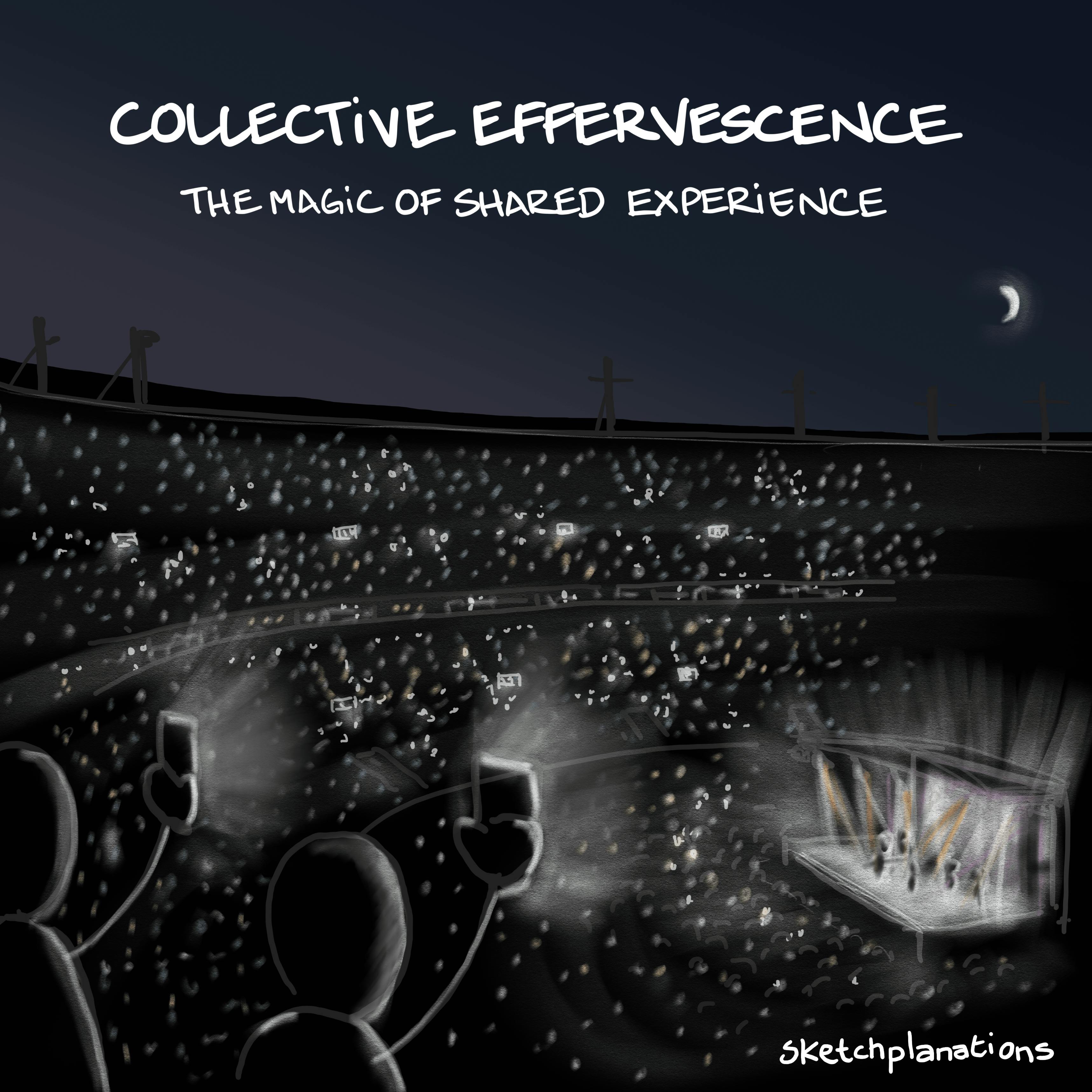
Collective effervescence
Collective effervescence is an eye-catching name for the magic of shared experience and moving in unison. As described by the French sociologist Émile Durkheim, it picks out those times when people come together in synchrony for an experience that's different and often greater than those you can have alone. It might be gathering and singing at a music festival, swaying to the music as one being at a concert, experiencing the wonder of nature together, when the crowd erupts together as a goal goes in and hugging the person next to you, taking a yoga or spinning class, worshipping together, the pilgrimage to Mecca, or that magical Shawshank Redemption moment listening to the duet from The Marriage of Figaro as one. Despite my feeble clarinet skills, I remember a brief goosebump feeling when the school orchestra played it all correctly. And I remember my hair standing up when Twickenham Stadium carried Swing Low, Sweet Chariot in unison. Collective effervescence is something we missed during the pandemic. It was identified in Dacher Keltner's book Awe as one of the 8 Wonders of Life. Also see: forest bathing, notice when you're happy, 5 ways to wellbeing…Collective effervescence is an eye-catching name for the magic of shared experience and moving in unison. As described by the French sociologist Émile Durkheim, it picks out those times when people come together in synchrony for an experience that's different and often greater than those you can have alone. It might be gathering and singing at a music festival, swaying to the music as one being at a concert, experiencing the wonder of nature together, when the crowd erupts together as a goal goes in and hugging the person next to you, taking a yoga or spinning class, worshipping together, the pilgrimage to Mecca, or that magical Shawshank Redemption moment listening to the duet from The Marriage of Figaro as one. Despite my feeble clarinet skills, I remember a brief goosebump feeling when the school orchestra played it all correctly. And I remember my hair standing up when Twickenham Stadium carried Swing Low, Sweet Chariot in unison. Collective effervescence is something we missed during the pandemic. It was identified in Dacher Keltner's book Awe as one of the 8 Wonders of Life. Also see: forest bathing, notice when you're happy, 5 ways to wellbeingWWW…
Read more…





